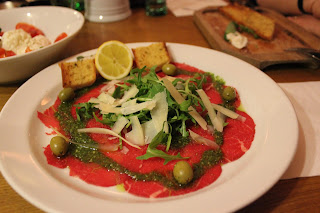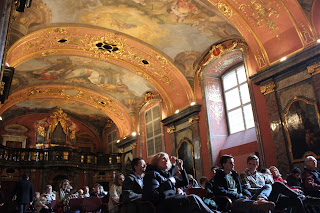There is a word in Swedish that doesn’t translate into English, which is unfortunate, because it pretty much describes an entire cultural mentality. One could say it sums up the Swedish way of looking at life. This word is lagom. Not too hot, not too cold, but lagom. Not too hard, not too soft, but lagom. Not too big, not too small, but lagom. The Goldilocks syndrome, if you will.
You might think this is a rather sound, balanced way to live your life - tending toward neither extreme but keeping to the middle of the road. But I’m convinced that the only place this road leads to is mediocrity, dissatisfaction and resentment. Mediocrity because you won’t ever stand out or excel. Dissatisfaction because you won’t get what you really want. Resentment because you’ll hate those who actually do get what they want.
There is a Scandinavian cultural phenomenon called the Law of Jante which is ”used colloquially...to negatively describe an attitude towards individuality and success common in Sweden and other Nordic countries.” (http://en.wikipedia.org/wiki/Law_of_Jante) To use a common illustration: Take a bucket of crabs. If one crab tries to climb the wall and break free from his prison, the other crabs will drag him down before he reaches the top. Why is this? I don’t know. Envy, fear, conformity - take your pick. Whatever the reason, Jante’s Law partially explains why socialism has worked so well in Sweden over many decades.
Jante’s law infiltrates every area of Swedish society: politics, economics, church, academia.... While the Swedish school system encourages creative and innovative thinking, its social and economic systems eventually clip anyone who dares to stick out from the crowd. Being something other than lagom carries with it a stigma and garners people’s distrust. It’s not kosher to say you’re the best at something. And it’s not kosher to show too much enthusiasm or demonstrate too much success or self-confidence. But I do want to say that I notice the trend is changing. People, especially the younger generation, are tired of conforming. People are starting to recognize that there is no integrity in doing something if the goal isn’t to "go big" and excel. People want to live unfettered. And I think that’s a natural human desire. We weren’t created to be just like everyone else.
In this next part I’m going to make a lot of generalizations that will probably ruffle some feathers. Just remember, I hold both a Swedish and an American passport.
A lot of Swedes see Americans as arrogant, aggressive and boastful, and they would be right. We are arrogant, we are aggressive and we do like to brag. To use an illustration from high school, Americans are the Homecoming King and Queen, and Swedes are the wallflowers (until they’ve had a few drinks - then they’re just as loud and obnoxious as the rest of us). But one could also turn it around and argue that Swedes are passive-aggressive, frustrated pacifists who, in the politically correct frenzy to be inclusive and tolerant, end up stunting their own growth potential and ability to deal with feelings and conflict. I’m being unnecessarily harsh here, but I say this to make a point.
It is, in my opinion, inevitable to grow resentful towards others who experience success and feel satisfaction in their pursued walks of life when you yourself have settled for less than the best. I find it ironic that every Swede I’ve ever met dreams of visiting or living in the States. When I ask why, the most common answer is that it’s so big. You see, people who live lagom lives dream of breaking the mold and living large. They outwardly scorn our American indulgence and inwardly covet our ”pursuit of happiness.” I’m certainly not holding our pursuit of happiness on a pedestal, because quite frankly, I think it’s pretty obvious that our gross mismanagement of said pursuit has come back to bite us in the rear. But there is something life-giving about being free to take risks, about knowing what you bring to the table, and not being afraid to say so. Self-confidence is a gift, and one that needs nurturing. I’ve struggled my entire life to gain mine and I finally feel like I’m making headway. Ironically, it’s happened during these three years that I’ve been living in Sweden. Go figure.
In conclusion, one should always be truthful and objective about one’s own abilities. It’s not okay to brag, especially when there is no substance to one’s claims. But one shouldn’t be afraid to excel at something and be aware of it. If you want something, then pursue the best version of that something. If you don’t, you will never be satisfied, and you’ll live the rest of your life wishing you hadn’t bowed to Mr. Jante.






















